Published August 6, 2025 02:26PM
Destinations & Things To Do
Is Whole-Body Cryotherapy the New Ice Bath? I Tried It to Find Out.
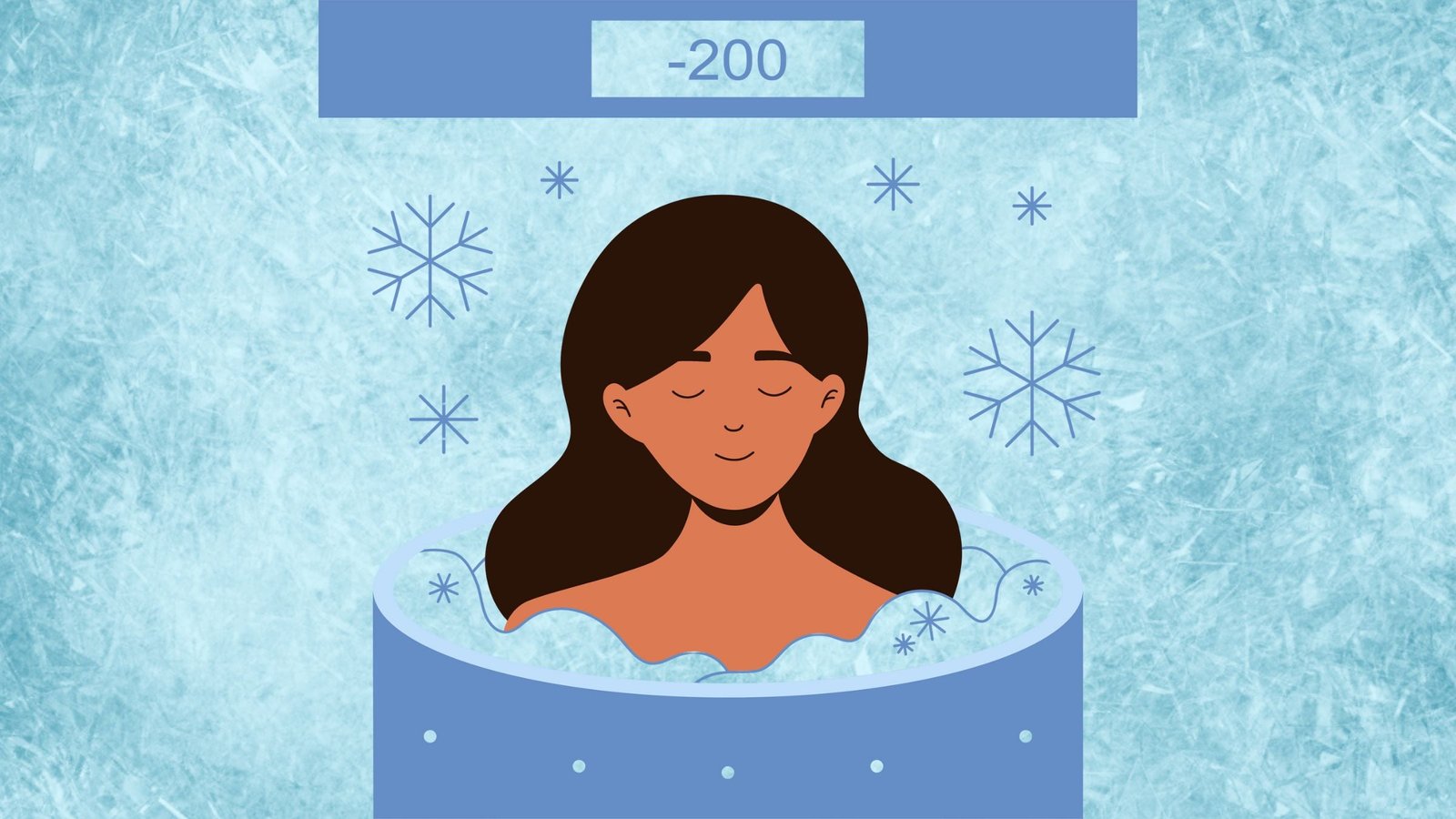
Dogsledding taught me how to endure the cold—but cryotherapy felt like a different beast. Here’s how my body reacted to the rising health trend.
(Photo: Anna Matviienko/Getty, Abigail Wise)
I went to CryoEffect, a self-described “Cold Spa” in the Chicago suburbs, in the middle of the weekday, when I was told it would be pretty empty. The only customer was a guy in the back who had just gotten out of a full-body cryotherapy treatment—basically, three minutes naked in a -200 degrees Fahrenheit freezer—and was reclining in compression boots that went all the way up his legs. He was coming to CryoEffect daily as part of a fitness project, because, as an airplane salesman, he’d made a bet with a client that he could lose 30 pounds in 30 days. If he won, his client would pay him $50,000.
“What if you lose the bet?” I said.
“He’s not going to lose the bet,” said Miriam, the Cold Spa’s owner. She had a great smile and curly hair, and her wrists were adorned with crystal bracelets, which she made herself and sold at a table by the door. Each crystal helped with different things, like creativity and self-love. But most customers just bought them based on which colors they liked best.
The guy beamed. He was confident about the bet. “In two and a half weeks, I’ve already lost 27 pounds.”
“You should donate the money to the owner of CryoEffect,” said Miriam.
Did he feel, I asked, like time in the freezer was helping his goal?
“For sure,” he said. “You come out, and it’s almost like you’re crafted. Like, you’re shaped.” He sort of pawed the air, like he was patting a Greek statue. “Everything is tighter. It’s amazing! And my sinuses are better, too.”
Well, who doesn’t want to be crafted like a statue? That sounded pretty good to me, especially since I’d come to try out full-body cryotherapy myself. My reasons were simpler: I’m a long-distance dogsledder, a lover of deep cold, and I’ve spent a lot of time winter camping in 30 or 40 below zero—so I was curious about how the Cryo experience would compare. Temperatures in the walk-in freezer got down to—apparently—-260 degrees Fahrenheit, but some users described the sensation as that of standing next to a fridge with an open door. These things are not the same. How cold would it really feel? And would it scratch that cold-weather itch, even in summer? I felt uniquely qualified to evaluate.
Plus, the freezer therapy came with a bunch of supposed benefits—some of them even backed by science, like improved mood and less muscle soreness after workouts. And dozens of cryotherapy services have popped up in the Chicago area alone. Proponents argue that the cold decreases inflammation—picture an ice pack on an injury, but for your whole body—and causes your blood to redirect to your core, so that when it comes back to your extremities, it’s carrying extra nutrients and oxygen.
Do whole-body cryo fans care about the FDA’s statements that “there is very little evidence about its safety or effectiveness”? Not particularly. Search #cryotherapy on any socials, and you’ll find countless posts about pain relief, athletic performance, and improved energy. I gotta say, I believe it: regardless of direct physical effects, the intensity of three minutes in a deep freezer would make for a hell of a placebo.
Another man walked into the spa—clearly a regular, because he wasted no time slipping behind a curtain and changing into the spa-issued bathrobe, socks, and slippers before stepping into the cryo chamber, which looked like a cross between an upright fridge and a coffin. Lights flashed; white steam poured over the top. He spent the entirety of his three-minute treatment chatting with Miriam about his daughter’s upcoming wedding, even when a deafening fire alarm went off, which Miriam shouted was a false alarm from the office next door. I covered my ears; he ignored it. He seemed to be a superhero of ignoring sensory input. When his time was up, he stepped out of the tank like it was nothing.
Now it was my turn.
The inside of the freezer-coffin was lined with some sort of black quilted poly that was coated in frost. I opened the door and stepped onto a carpeted platform, which rose up until my head poked out an opening at the top. I wore a bathrobe over my underwear, but now that I was fully enclosed, I took off the robe and handed it to Miriam; no one could see my body, but I felt very exposed. The air already felt frigid. How much colder would it get? I started to get nervous.
A screen at the top of the tank read -97 degrees Fahrenheit, with 2 minutes and 54 seconds left. Within two seconds, temps dropped another 20 degrees. It felt like someone was pressing solid ice cubes to every inch of my skin. I had the urge to crouch down and make a ball, wrapping my arms around my legs to preserve heat, but I was afraid to bend at all and brush the frosty lining of the tank.
With a strong hissing sound, mist started to pour out around me, rising up to my neck. The temp dropped to -165.7 degrees Fahrenheit, which did not feel at all like standing in the open door to a refrigerator. It felt like I was standing in an oddly windless tundra—naked. I suppose, if I hadn’t seen the thermometer, I would have estimated the temperature to be around -40 degrees Fahrenheit, which is still very chilly to be naked. I guess that’s what they call a dry cold.
“Your skin receptors are talking to your brain,” Miriam said calmly, outside the coffin, as if those words meant anything at all. “Your blood is rushing to your core to protect your vital organs. When you step out of your three minutes of torture, your blood will rush back where it belongs and fight inflammation along the way.” She started listing the conditions this would help: brain fog, stress, depression, anxiety, acne, rosacea, scarring… (Conversely, the FDA warns of asphyxiation, frostbite, eye injury, and burns.)
It was hard to focus on what she was saying, which was surely the point; she was well-practiced in distracting people from the pain of cold. Still, the sensation of cold won over. It felt like thick needles were stabbing slowly into my shins and arms.
“You’ll be amazed how well you sleep tonight,” said Miriam cheerfully.
With 53 seconds to go, I started laughing from the pain. Miriam recommended that I put my arms up above the tank. “That leaves the girls exposed,” she warned a few seconds too late. My forearms were covered with the biggest goosebumps I’d ever seen.
With ten seconds to go, she traded me the mittens for my room-temperature bathrobe, which felt unbelievably toasty, like it had been warming for hours in the hot sun.
Normally it takes me a long time to warm up after being in deep cold—a half-day inside, at least, for the bone-chill to go away. I can mush in the morning, sit by a fire all afternoon, and still want a hot bath to warm up fully for bed. But within seconds of stepping out of the freezer-coffin, I felt fine again, except that my legs were as numb to touch as if they’d been novocained. It was kind of fun to poke them. My clothes, when I put them on, felt balmy. I wanted to skip around. I stepped back onto the street and everything seemed brighter. Almost sparkling. I had survived!
Apart from a brief euphoria, I noticed no other effects of the treatment, though to be fair, most advocates of cryotherapy recommend a series of sessions in order to get the benefits. But it certainly gave me a feeling of accomplishment far beyond what I’d normally get from three relatively passive minutes of my day. Would I do it again? Sure—but I’m more likely to DIY it by stepping outside in pajamas on a winter morning before I drink a cup of coffee, or running out of a sauna and into a snowbank for fun. If I’m a believer in cryotherapy, it’s because I am, above all, a believer in the power of cold—to invigorate, to calm, and to cast the world in beauty that wouldn’t be quite as visible at other times. Sometimes winter really can cure what ails you—and if a freezer-coffin can help me glimpse that on a summer day, consider me sold.
Blair Braverman is a columnist and contributing editor for Outside, a long-distance dogsledder, and author, most recently, of Small Game and Dogs on the Trail.
She’s completed some of the toughest dogsled races in the world, including the Iditarod, the Kobuk 440, and the Canadian Challenge, and co-runs the dog team BraverMountain Mushing with her husband, Quince Mountain, in northern Wisconsin. They share the team’s many adventures on Patreon.
Blair’s a contributor to The New York Times, Vogue, Esquire, This American Life, and elsewhere. She recently hosted the BBC Radio 4 show Animal and is survival correspondent for the podcast You’re Wrong About. She’s spoken about resilience in the wilderness for companies including Microsoft and Google.
Her favorite pieces she’s written for Outside are about competing on the Discovery show Naked and Afraid, being a woman alone in the woods, learning to write, and mischievous sled dog Blowhole.
Destinations & Things To Do
Vietnam named one of Asia’s most revisited travel destinations
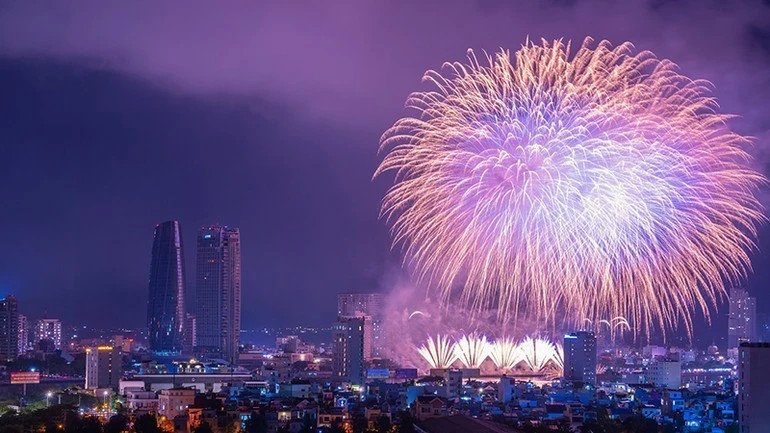
According to recent booking data from the digital travel platform Agoda, Vietnam has risen to third place among the top five Asian countries with the highest rate of returning international visitors – behind only Japan and Thailand. Notably, Da Nang appears for the first time among the top ten Asian cities with the highest percentage of returning travelers.
On August 6, Agoda released its latest “Most Revisited Destinations” ranking, highlighting Da Nang as one of the most appealing cities in Asia.
Based on booking data from the first half of 2025, Vietnam now ranks third in Asia for returning international guests, surpassing Malaysia and Indonesia.
Of particular significance, Da Nang’s debut in the top ten marks a remarkable milestone, as Vietnam had no representatives in this list the previous year.
The vibrant coastal city in central Vietnam has firmly secured its place among Asia’s top destinations, underscoring the growing appeal of the S-shaped country on the region’s tourism map.
The five most revisited destinations in Vietnam during the first half of the year were Da Nang, Nha Trang, Ho Chi Minh City, Hanoi, and Phu Quoc. While the three beach paradises attract visitors with soft white sands, clear waters, and sun-soaked resorts, Ho Chi Minh City and Hanoi captivate travelers with their vibrant urban rhythm, rich cultural heritage, and colorful culinary landscapes. Together, they offer a perfect blend of relaxation and local immersion.
These destinations have a unique allure that makes one visit never enough. Many travelers return to complete unfinished journeys, relive memorable experiences, or simply embrace the familiar comfort of places that once stirred deep emotions.
Agoda data shows that many tourists revisited the same destination multiple times within just six months – clear evidence of the strong pull of locations that leave a lasting impression.
Vu Ngoc Lam, Country Director of Agoda Vietnam, stated that from the dynamic pace of its cities to the stunning beauty of its sun-drenched beaches, Vietnam offers a rich, authentic experience that keeps visitors coming back.
“Vietnam’s presence among the most revisited destinations in Asia is a positive signal reflecting the country’s diverse and increasingly compelling appeal,” Lam emphasized.
Alongside Vietnam, the ranking highlights other Asian destinations with high return visitor rates, including Bangkok (Thailand), Tokyo (Japan), Seoul (South Korea), Bali (Indonesia), Osaka (Japan), Taipei (Taiwan-China), Kuala Lumpur and Johor Bahru (Malaysia), and Hong Kong (China). Each offers a unique charm – from distinctive cuisine to vibrant cultural life – ensuring that every journey brings something new to discover.
PV
Destinations & Things To Do
Scott’s Winter in Summer Sale Is Bringing the Heat with Deals Up to 60 Percent Off
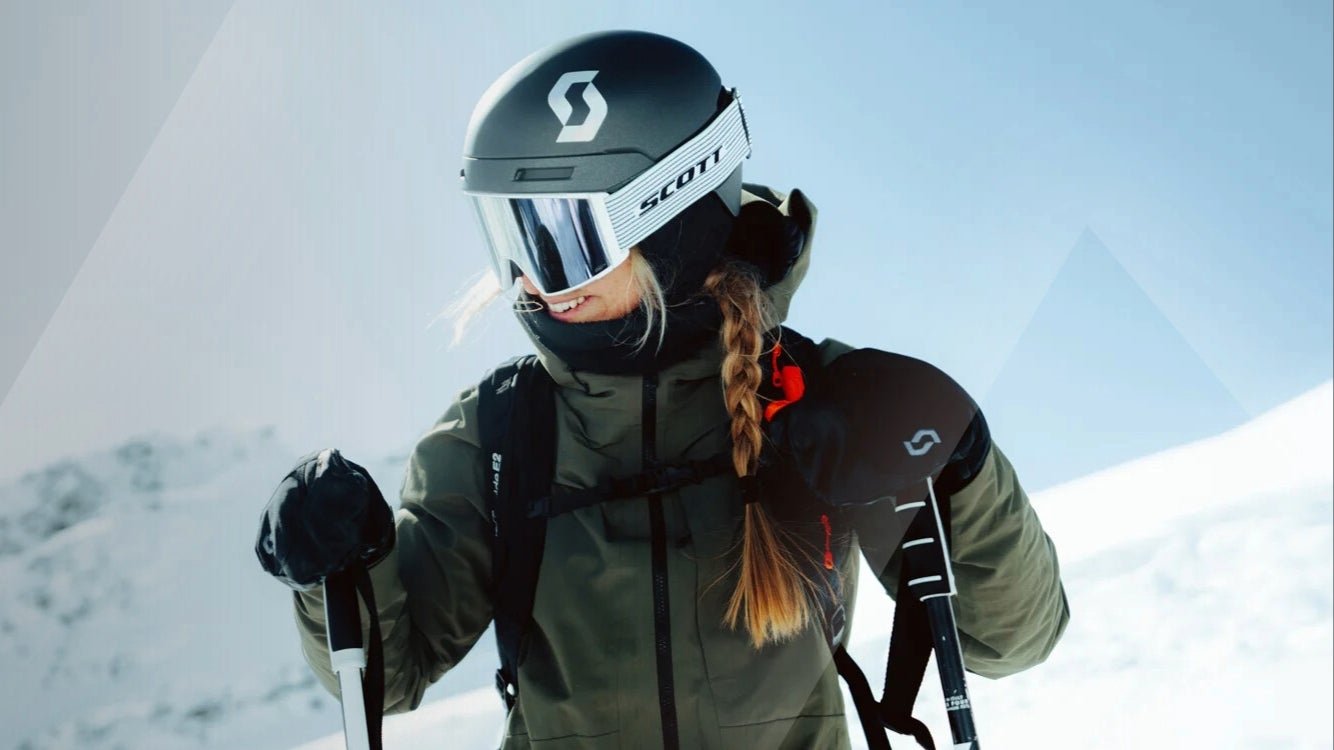
If you buy through our links, we may earn an affiliate commission. This supports our mission to get more people active and outside.Learn about Outside Online’s affiliate link policy
The temps are hot—but these deals on ski gear are even hotter.
(Photo: Courtesy of Scott)
Updated August 6, 2025 07:06PM
As I sit writing this, it’s 90 degrees outside, the sun is beating down, and an ever-present layer of sweat glistens on the surface of my skin. Isn’t summer supposed to be the best season? As a kid, yes—but as an adult it’s hard to get excited about the heat. Instead, I find myself daydreaming about the first bluebird day of a fresh ski season and perusing the internet for snowy inspiration. And what do I find? A Winter in Summer sale on ski and snowboard gear from Scott, just in time to cure my Summertime Blues.
While Scott offers all kinds of outdoor adventure essentials (like gravel bikes and trail running shoes), the Winter in Summer sale is a can’t-miss chance to shop the brand’s ski gear, which is marked down by up to 60 percent. It’s summer, the temperature is hot, so why shouldn’t the deals be hot, too? And even if your quiver is fully stocked, you may still want to grab ski-season must-haves while they’re deeply discounted, from waterproof shells and Arctic-ready insulation to helmets, goggles, boots, poles, and skis. I scoured every single page of the site and asked our ski-savvy editors for their top picks—here’s what we’re shopping at the Scott Winter in Summer sale.
Our Top Picks from the Scott Winter in Summer Sale
Freeguide Carbon Ski Boot
This is easily one of the best deals we found in the sale. The Freeguide Carbon boot is a freetouring boot that’s ready for serious mountain missions. The BOA fit system liner ensures a dialed-in fit and a carbon shell provides excellent performance for downhill riding. An integrated ski/walk system and a 2-part tongue make these more than suitable for going uphill, too.
LCG Compact Goggle
Using the same engineering from their popular LCG goggle, Scott made the LCG Compact to fit small and medium faces. The goggles have Scott’s clever lens changing system built in, and all of the features you’d expect from a quality goggle: 100% UV protection, anti-fog coating, a no-slip strap, and a spare lens.
Vertic GORE-TEX 2-Layer Jacket
Few things are more important when skiing than a quality shell jacket. This 2-layer jacket is made with an impenetrable GORE-TEX membrane, has pit-zips for breathability, and clever features like interior sleeves with thumbholes and a powder skirt to keep snow out.
Symbol 2 Plus Helmet
Don’t hit the mountain without a helmet. The Symbol 2 is a great value, especially at 50 percent off. It has a WRAS 2 fit system that accommodates all head shapes and is equipped with MIPS to help protect your brain on impact if you do find yourself taking a tumble.
Defined Tech Hybrid Women’s Pull-over
Personally recommended by a fellow Outside editor, the Defined Tech Hybrid is a versatile mid-layer that is great for a day on the slopes, but also for hikes, backpacking, climbing, or running. It has warm hand pockets and an offset half-zip that keeps the zipper off your chin. A hybrid construction keeps moisture at bay.
Mitten Explorair Pro GTX
Combine a GORE-TEX outer shell and a sherpa liner and you’ve got some supremely warm mittens on your hands. These are reinforced with heat-resistant DuPont™ Kevlar® thread on the palms for extra durability and have a carabiner loop to keep them close when you aren’t wearing them.
Original Fleece Pants
If your closet is lacking a cozy pair of sweats for après ski, the Original Fleece Pants are an easy pick up. The loose fit is going to be a huge relief after a long day in multiple layers and the little details are all there, from the adjustable belt to hand-warming pockets and a not-too-tight hem at the ankle.
Destinations & Things To Do
The Continental Divide Trail: What’s the Bob Marshall like?
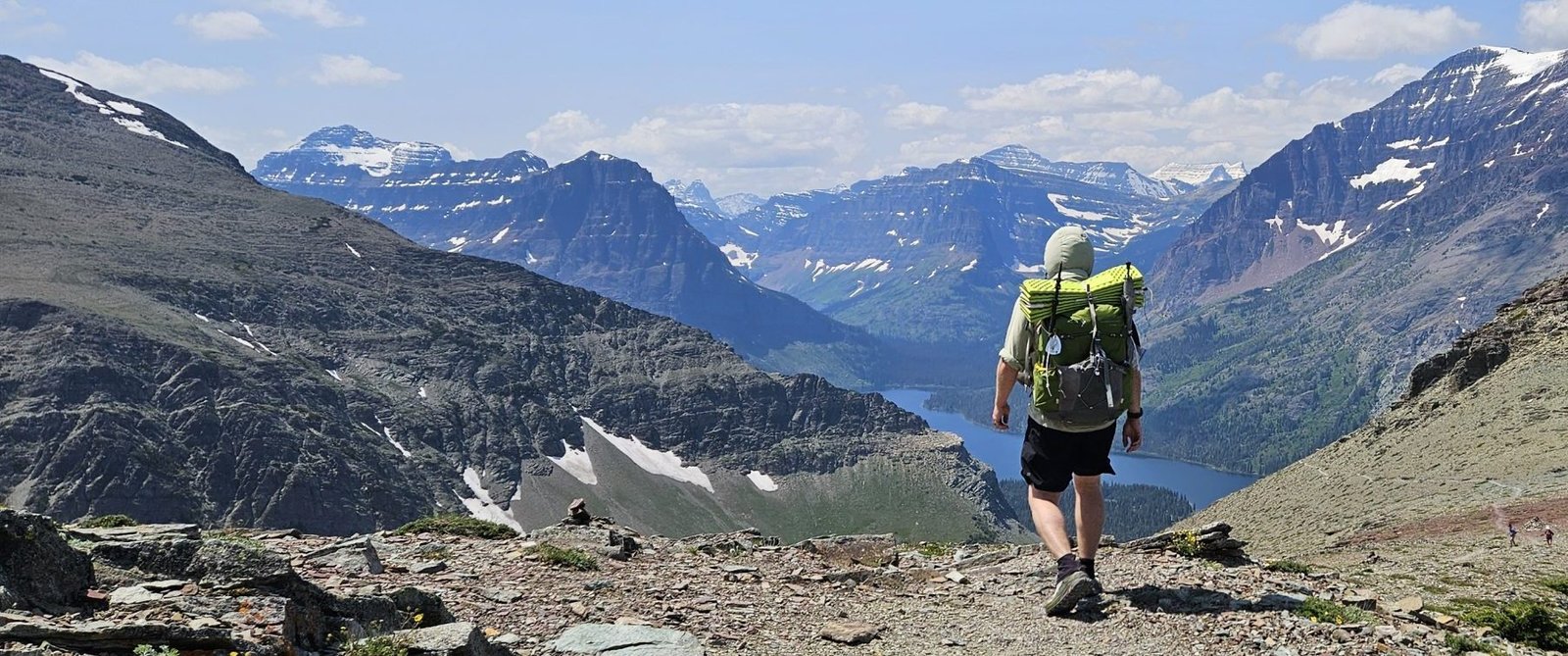
Part 2
The Bob Marshall
“A good traveler has no fixed plans and is not intent on arriving.” — Lao Tzu, Tao Te Ching
Dogleg, one of the folks Ice Cream and I met at the end of the AZT, was at Looking Glass Base Camp. He gets around, which is good, since he’s a source of good advice and trail magic both. He told me that he knew someone that quit the CDT because of COVID, as I sat outside in a plastic chair, trying to social distance, wrapped in my fleece liner, with COVID, probably. I never got tested, but the symptoms matched; I couldn’t smell a thing for one, and felt like death for another.
I was one of the early guinea pigs for the vaccine, and over the course of two or three years probably received five doses. I just got them when I got the flu vaccine. Easy peasy. But I wasn’t vaccinated now, and had picked the bug up somewhere. No one escapes forever, and COVID is part of life now, like the cold or the flu.
Stubbornly, I only allowed myself one zero before joining the rest of my tramily for the hike to Two Medicine. It was a short hike, only ten miles. How bad could it be?
On the climb up the slopes of Mt. Henry my mantra was, “I can breathe, I can breathe, breathe, breathe.” I barely could. My pack felt like it was loaded with rocks and misery, my body was lead, my lungs, death. Like Smaug from the Hobbit, I could produce a list of all of the parts of me that were no good.
The boys were long gone, far ahead, but Ice Cream watched from behind as I zombied up the mountain. I let my hands hang loose at my sides—less effort that way, somehow—and swayed back and forth. Between ragged breaths I would sometimes imagine laying down and dying. Melodramatic, yes, but also a tempting thought at the time.
In fact, that thought was so tempting that I did my best to do just that. Not even taking off my pack, I half sat, half lay down and did nothing else. Had I not felt so awful, it would have been the most relaxed I’d ever felt. I had no energy for any muscle tension whatsoever. Just breathing. Ice Cream, the angel, the perfect, sat down and shaded me with her umbrella and waved away the flies when they landed on my face. If ever there was a reason not to lay down and die, she would be it.
The death-rest worked well, and after a while I was able to get up and go again. It helped that most of the climb was over. Nearby was a blue blaze to the summit of Henry, but we passed it by. That stretch is already beautiful enough. Later came the baby bighorn sheep and their ragged-looking mothers, their winter coats still clinging stubbornly into June. The sheep on this trail are accustomed to people, and barely flinch when hikers pass by.
Down, down to the road and to Two Medicine shortly after. It looked different than it had the first time. The little ranger hut was there, and no doubt the beleaguered ranger Marcy was inside trying to sort out hiker’s dreams for too little pay. We didn’t go in. Toolman said we didn’t need permits for this campground, after all.
Instead we walked into the campground and tried to find the spots reserved for visitors without vehicles. There are a few. Certainly the boys would be there, already set up. They were not. After an hour of circling and not finding them, and getting no response from our Garmin messages, we decided to talk to Marcy after all.
She was there, about ready to close, hoping to eat her lunch, hours late. Despite that, she offered to help us out, since Two Medicine does, in fact, require permits, even for the walk-in sites. We told her to eat her lunch, and that we would hitch back to East Glacier. It was one half dozen or the other for us, and Marcy was too sweet to take advantage of.
Before hitching out we walked the short distance to the camp store. Toolman and Frito were there. They’d been there for a while, having never visited Two Medicine at all. It was obvious that Ice Cream and I were salty as the sea about this, but in the end, it wasn’t that big a deal. I just made a note not to count on them for team-related plans if they were in the front, which they undoubtedly would be.
Under a flag of unspoken truce, the four of us hitched back, once again, to Looking Glass. I was beginning to feel like a fly stuck to fly paper. Nearly one hundred miles hiked and we were still at the start.
I was still coughing up a lung, so we zeroed again. The boys may not be overly proactive, but they are good and loyal friends.
The next day we left for the Bob. Still sick but able to breathe better, I fell back to my old mantra, Stronger Every Day. It got me through IT band syndrome on the AT and it would get me through COVID now.
The Bob Marshall doesn’t begin right away. Two days of basic northern forests. The Bob Marshall Wilderness, named after pioneering conservationist Bob Marshall who advocated for preserving vast natural areas in the 1930s, encompasses over a million acres of pristine Montana backcountry. Established in 1964 under the Wilderness Act, it forms the heart of a larger 1.5-million-acre complex that includes the Great Bear and Scapegoat wilderness areas, all maintained as roadless zones where motorized vehicles are prohibited, allowing only foot, horse, or mule travel.
It’s something like two days from East Glacier to the wilderness boundary for average hikers (hi, it’s me, average hiker). The space in between isn’t memorable at all, except that Toolman took a tumble again, going, as he described, ass over tea kettle. On a steep and muddy slope he slipped. This time he was a few steps behind me. Once again I heard Frito say, “Toolman!” I whipped around to see that, somehow, he had slipped in the mud and then flipped down the hill. Again the plants were his friends, and some thick bushes caught him. He climbed out, brushed off, checked his gear and soldiered on without injury or complaint, as always.
Most hikers know the Bob as the place with bad blowdowns. For us it wasn’t. Maybe word got around and the Chainsaw Bois showed up to trim it. Maybe it was aliens. Nothing is 100% certain. Therefore, less parsimonious explanations carry equal weight to more sensible ones, AMIRITE?
Anyway, whatever the blowdowns are like any given year, the Bob does have a load of stream crossings, and since Glacier had been constantly wet, we hiked the first 200 miles of trail with wet feet. Squish, squish.
Other than the Chinese Wall, which is much cooler in person than in photos, I don’t remember the Bob that well. I was grumpy and sick. I fell into another death-rest once, and again Ice Cream patiently took the lead with camp setup, navigation and Man-Flu maintenance. There were some pretty views, I do remember that, and a chick named after Legumes, and another that judged Ice Cream for carrying a bear can rather than an Ursack. Legumes was sweet and memorable, Judge Dread was not.
There were also sporadic ranger cabins where cowboy camping on the porch is gray-area permissible, and where, wonderfully, privies can be found.
We strayed onto our first “alternate” beginning the lasting trend (for Ice Cream and I at least) of routing ourselves with Gaia rather than sucking the motherly teat of FarOut.
There were a lot of burned lands, and some rain, and some thunder and lightning (very, very frightening me. Galileo). Flies abounded, and would attack in legions whenever we stopped. I counted at least eight different species crawling on me at any given time, most didn’t bite. They just crawled around annoyingly and gave disgusting, tickly kisses with their proboscis.
A group of army veterans on horseback passed at a water source. All wore western gear, and most wore guns. They were Chads, their horses were Chads, their guns were Chads. One’s name was actually Chad, and he had hiked the AZT when Ice Cream and I had, though we never met him.
At times, Ice Cream and I caught the boys, even were able to hike with them for a while before Toolman’s machine-like stride took him away. Toolman is 99% sure a wolf passed his tent one night as he camped alone. There was a lot of sound, and a fresh dog print too big to be a dog.
Then, without much warning, there was a parking lot. A tiny cardboard sign said, “CDT trail magic.” The boys were already in Augusta, MT. Ice Cream and I planned to get there the following day, so we went to check out the trail magic.
There are times in life when I feel simultaneously surprised and not surprised all at once. This was one of those times. The trail magic was, of course, Dogleg and Trip from the AZT, and half a dozen other cool folk. Dogleg had a camper setup and was hosting a gaggle of tired hikers. He had drinks, made stir fry and hotdogs. Herman’s blessing upon him.
Other cool people were there, too, like Spruce Goose, attempting to be the first woman to walk in a continuous line from Tierra del Fuego on the southern tip of Argentina to the top of Alaska. Having made it to the CDT and following it “since it was convenient,” she was doing a great job of it. She had been working the project since something like 2017 and had dealt with the worldwide shutdown for COVID, Mexican cartels, perilous jungles and who knows what else. She also had a dog, Chicken Inspector, who she had picked up as a pup specifically for this trip. The dog knew nothing else. If I ever get the chance to reincarnate, I want to be a dog that belongs to someone like Spruce Goose.
Based on quality information from Dogleg, along with offers of pancakes for breakfast, Ice Cream and I decided to camp nearby and hitch in to Augusta in the morning. As my grand-pappy used to say, “Why do it now when you can do it later?” A wise man.
We hung out, we chatted, we laughed, we slept, and in the morning we rode into Augusta with a man wearing a thousand yard stare and a pistol, but that’s a story for part 3.
Unless given express permission for their use, all names and trail names in my articles have been changed. Any resemblance to real people is coincidental. If you enjoy my writing, please feel free to subscribe or buy me a coffee using the Tip the Author button.
-

 Brand Stories2 weeks ago
Brand Stories2 weeks agoBloom Hotels: A Modern Vision of Hospitality Redefining Travel
-

 Brand Stories2 weeks ago
Brand Stories2 weeks agoCheQin.ai sets a new standard for hotel booking with its AI capabilities: empowering travellers to bargain, choose the best, and book with clarity.
-

 Destinations & Things To Do3 weeks ago
Destinations & Things To Do3 weeks agoUntouched Destinations: Stunning Hidden Gems You Must Visit
-

 Destinations & Things To Do2 weeks ago
Destinations & Things To Do2 weeks agoThis Hidden Beach in India Glows at Night-But Only in One Secret Season
-

 AI in Travel2 weeks ago
AI in Travel2 weeks agoAI Travel Revolution: Must-Have Guide to the Best Experience
-

 Brand Stories1 month ago
Brand Stories1 month agoVoice AI Startup ElevenLabs Plans to Add Hubs Around the World
-

 Brand Stories4 weeks ago
Brand Stories4 weeks agoHow Elon Musk’s rogue Grok chatbot became a cautionary AI tale
-

 Brand Stories2 weeks ago
Brand Stories2 weeks agoContactless Hospitality: Why Remote Management Technology Is Key to Seamless Guest Experiences
-

 Asia Travel Pulse1 month ago
Asia Travel Pulse1 month agoLooking For Adventure In Asia? Here Are 7 Epic Destinations You Need To Experience At Least Once – Zee News
-

 AI in Travel1 month ago
AI in Travel1 month ago‘Will AI take my job?’ A trip to a Beijing fortune-telling bar to see what lies ahead | China

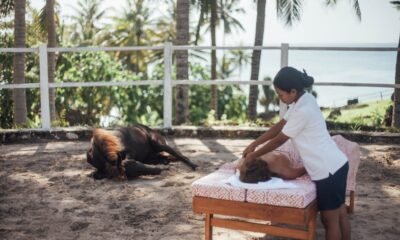









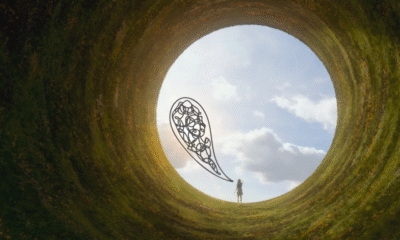

You must be logged in to post a comment Login